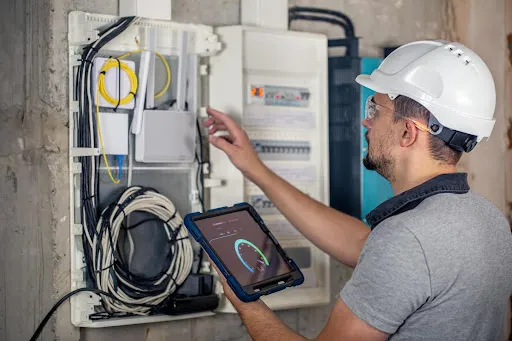Smart electricity meters – what benefits do they offer to users and suppliers?
 Smart electricity meters
Smart electricity meters
Within the European Union, energy suppliers are required to gradually replace traditional electricity consumption measuring devices with smart electricity meters. What are smart electricity meters? How do they operate in practice? What benefits do they offer to both users and suppliers?
Electricity meters have widespread applications across various sectors. They are present in every location with an electrical grid, including households, businesses, industrial plants, and public facilities. Consequently, electricity consumption meters are installed wherever overhead or underground power lines deliver electricity to consumers. Modern solutions include smart electricity meters, which enable remote readings. These measuring devices automatically collect, store, and transmit data regarding energy consumption.
Terminology
Although the term “smart electricity meter” is considered technically accurate, alternative expressions such as “smart power meter” or simply “smart meter” are also used. All these terms refer to a measuring device equipped with communication capabilities for integration with a remote reading system.
An increasing number of consumers already have smart electricity meters installed, primarily due to legal regulations. This trend results from the implementation of EU directives concerning measuring instruments and electricity services. According to the provisions of the Energy Law Act, distribution system operators must install smart electricity meters in at least 80% of households by the end of 2028. These smart meters are gradually replacing traditional induction and electronic meters. It is estimated that by the 2030s, smart meters may entirely replace previously used solutions in Poland.
How do smart meters work?
A lack of understanding of smart electricity meters’ operation and associated benefits has led to mixed opinions. In practice, however, these devices perform the same tasks as traditional meters while offering important additional functionality. Their operation is based on built-in integrated circuits that generate impulses proportionally to the flowing current and applied voltage. These impulses are then converted into kWh, allowing for the calculation of electricity consumption.
In the case of smart meters, the electricity consumption status is remotely transmitted to the supplier. Importantly, communication is bidirectional, allowing suppliers to perform actions such as remote software updates. An important point to note, especially from the perspective of consumers who still have traditional meters, is that the costs for the purchase, installation of the meter and provision of the infrastructure that is necessary for the proper functioning of remote reading are on the side of the distribution system operator.

Types of smart electricity meters
Smart electricity meters can be classified based on:
- number of phases
- direction of energy flow
- measurement method
Depending on the number of phases, there are single-phase meters (230 V + three wires) for standard installations or three-phase meters (400 V + 4–5 wires) for high-power appliances, such as electric vehicle chargers or induction cookers.
In terms of energy flow direction, there are unidirectional meters for installations that only consume energy and bidirectional meters, which are used by consumers with their own energy sources, such as photovoltaic panels. A smart electricity meter for photovoltaics measures not only the amount of energy drawn from the grid but also the energy fed back into the grid by the prosumer.
The third criterion for categorising meters is the measurement method. Typically, in cases where appliances are directly connected to the meter, direct-connected meters (1:1) are used. In situations involving high total power, transformer-operated meters are used, which calculate values proportionally to the amount of electricity consumed.
Benefits of smart meters for consumers
For electricity consumers, the use of smart meters offers several advantages, including cost savings and reduced risk of power supply disruptions. Smart meters enable more precise measurements of actual electricity consumption, which, according to various estimates, can save consumers up to 10% of their energy usage. This results in lower electricity bills.
Beyond lowering energy costs, modern smart meters contribute to reshaping competition within the energy market. They enable more accurate monitoring of consumption, automatic billing, and more flexible tariffs, benefiting suppliers offering innovative sales models while limiting opportunities for less technologically advanced companies.
Another advantage is the ability of smart meters to communicate with central systems in real time. This feature facilitates faster detection of anomalies and deviations from standard operations, aiding in the localisation of potential failures.
Benefits for suppliers
From the perspective of distribution system operators and electricity suppliers, the ability to remotely and quickly detect the source of a potential failure is a significant benefit. Moreover, some faults can be diagnosed entirely remotely. Additionally, real-time data readings from consumers support better analysis and energy supply planning based on historical consumption patterns. This leads to economic benefits for suppliers, as remote readings eliminate the need for manual meter inspections, thereby reducing operational costs.